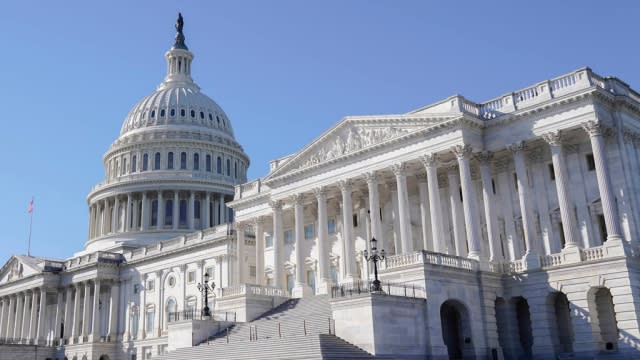Exploring the impact and history of US foreign aid

The debates over aid to Ukraine, Israel, and Gaza have dominated Congress.
President Joe Biden has made it clear he will veto any spending bill that does not include aid to Ukraine, while some lawmakers, including Speaker of the House Mike Johnson, have been less enthused.
Polling continues to be mixed on how Americans feel about foreign aid and spending in Ukraine.
The U.S. has sent more than $74 billion in aid to Ukraine, according to the Kiel Institute for the World Economy, a German research institute.
To put that in historical context, that dwarfs many other major aid packages in times of crisis.
Over the last two years, the annual average of aid to Ukraine exceeded the annual average of military spending during the war in Afghanistan.
According to one analysis by the Council of Foreign Relations, aid for Ukraine last year was comparable to the entire budget for the state of Virginia.
And yet, the aid was still just a small fraction of the defense budget, which was set at $703 billion last year.
When you look at Ukraine's aid as a percentage of the country's GDP, the U.S. isn't at the top of the list. Countries in Scandinavia and Eastern Europe are spending much more.
And the amount of aid will only continue to grow, both during and after the conflict.
“Americans need to better understand why we're providing aid to these countries, but also the relative balance of military and economic assistance and why these battles are being played out in Congress,” said Jessica Trisko Darden, Associate Professor of Political Science, Virginia Commonwealth University.
Since the Cold War, the U.S. has been the biggest distributor of foreign aid in the world, both to international organizations like the United Nations and directly to state governments.
And that can include state governments that don't necessarily serve pro-democracy interests.
SEE MORE: The long history of US support for Israel
For example, the U.S. sent billions to Saudi Arabia, and that money directly contributed to their ongoing conflict in Yemen.
“The United States provides foreign aid to almost every country on the planet. There are very few exceptions—Iran and North Korea, for instance,” said Trisko Darden. "The United States also provides aid to countries such as Pakistan that actually vote against the United States position in the United Nations over and over and over again. We're not just buying support for the United States with our foreign assistance programs. We're trying to achieve some deeper long-term objectives in terms of both political and economic development.”
Whether sending aid to governments directly or to Non-Governmental Organizations, trying to help countries in crisis is not as simple as it seems.
For example, millions of dollars of foreign aid intended for civilians affected by the Syrian civil war were siphoned off by the Syrian government, led by Bashar al-Assad's regime.
The regime is still facing restrictions from the U.S. and E.U.
“Research has shown that if you provide money to governments, they can redirect their existing spending to other ends. A study out of the University of Washington demonstrated that for each U.S. dollar that was provided to a set of African countries for health care spending, they reduced their own internal budgeting for health care by $1.10,” said Trisko Darden. “At the same time, providing directly to NGOs or charitable agencies can prevent a state from ever developing its own capacity to provide those services. And I see this in places like Haiti, where NGOs have essentially taken over all of the service functions of the state, like providing health care and, in many instances, education and other basic services.”
But there is also substantial evidence that foreign aid can and has been impactful, especially for disease eradication, humanitarian aid, and more.
In recent years, other countries have increased foreign aid, which some argue is a new frontier in the battle for soft power.
China, for example, has quickly increased spending across the African continent. China tends to use a different model of aid than the U.S., relying more on loans with interest.
Other rivals, like Russia, have increased overseas aid spending as well.
With the conflicts in Ukraine and Gaza pressing on, the debate over how the U.S. sends its aid overseas will likely heat up in Congress.
